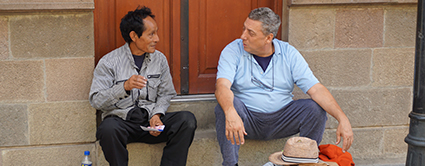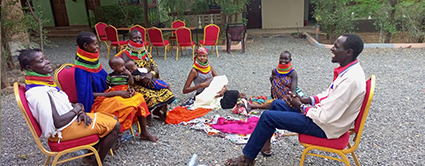Drama and the Arts
It's a fact that we remember far more of what we see than what we hear. One of the prime ways to help people understand and remember a story is to show it
We are serious about portraying Bible stories accurately and about people hearing the stories with nothing added and nothing taken away---BUT as you see in this spontaneously done video---we enjoy the freedom to show expression that is justified in the story!
Details on how we like to do dramas are on on this site. For now, you might want to see a story dramatized live on location. On a workshop trip to Israel, a highlight of our experiences was enacting Bible stories as we toured. The one you can see here, the Bent Woman, was filmed in the remains of the synagogue in Capernaum.
Below you will see photos taken of the small study groups that selected and dramatized a Bible story they had learned during the week. See how many stories you can identify.
Drama Speaks
In STS workshops and the STS Handbook, we teach the storytellers how to tell their Bible stories using actions, expressions and voice inflections so that the story can be seen and heard.
we teach the storytellers how to tell their Bible stories using actions, expressions and voice inflections so that the story can be seen and heard.
From the beginning, we emphasize that any emotions or actions shown must be justified from the text. Showing an emotion that is just your idea is adding to the Word of God, not a good idea!

To “show” a story, these are some of the skills we teach and encourage people to use.
We demonstrate actions that can show fear, greed, aggression, flight, surprise, bravery, wisdom, depression and other emotions.
Emotions can be demonstrated even through slight gestures. Then we have learners practice what they have seen and heard.
Where the storyteller stands, looks or gestures can establish the location of people, crowds, or places mentioned in the told story.
of people, crowds, or places mentioned in the told story.
As an example, when storytellers are speaking a person’s quotes, by slightly repositioning their bodies, to be in the place and looking in the correct direction that simulates where that character is located, where he would be looking or what he would have been doing, brings life to the story.
For instance, healed people may look amazed and slowly move their newly healed body, or they may become excited and jump for joy. Hesitations in speech, and also hesitations in movement, add realism and drama to storytelling.
We always give these words of caution: “If you find that those to whom you tell the story come to you afterwards and say how great of a storyteller or actor you are, rethink your presentation. Storytellers are not the feature; God’s Word is the feature."
Too much movement by a storyteller can take away focus from the spoken words; people begin to watch the storyteller more than listening. It is best to make small movements that just illustrate the words you speak.
What you want people to say is, ‘That story spoke to me,’ or ‘I am that person in the story.’”
Toward the end of each of our workshops, we give opportunities for everyone to design and present dramas. To keep accuracy, while the rest of their drama group silently enacts the story, we have one person tell (or sing or chant) the story accurately, but with an expressive voice.
We do not have various people speak the parts of the characters in a drama because it is more difficult to have many people remember their parts than it is for one person to remember the story. Also, when various people speak the lines, even when they all do well, listeners are less likely to remember the story so they can tell it to others than when they hear a story told by one expressive storyteller.
As well, when these new “actors” forget their lines and start to make up spoken lines, the accuracy of God’s Word is lost. What then is the value of even presenting the story? Very often, out of nervousness, those words people do make up are said in jest, and and a precious story from God’s Word becomes a comedy.
Worldwide, this type of drama is a loved part of the workshop experience. We do dramas toward the end of the workshop. By then, even the shy attendees join in and become brave enough to share in front of others. Again and again, we see even the shyest people from cultures that normally do not show emotion become creatively dramatic. Humm? Maybe this is the joy of the Lord showing up?

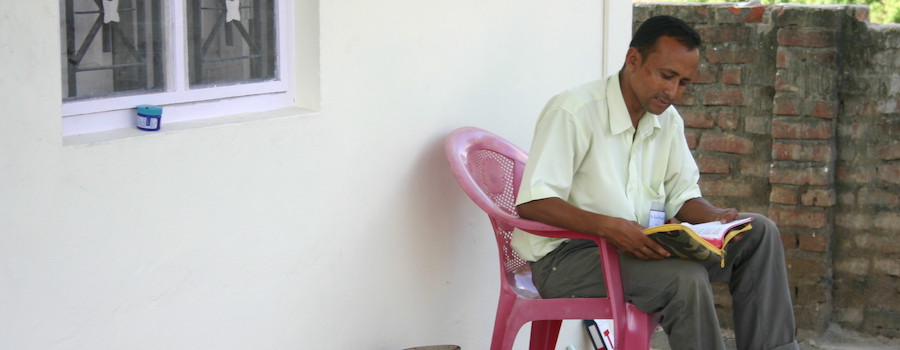
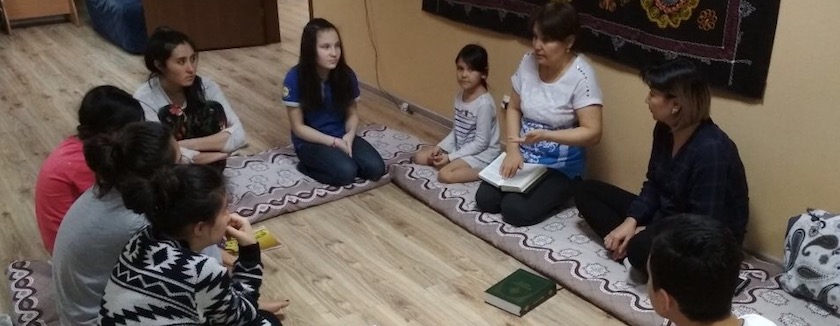
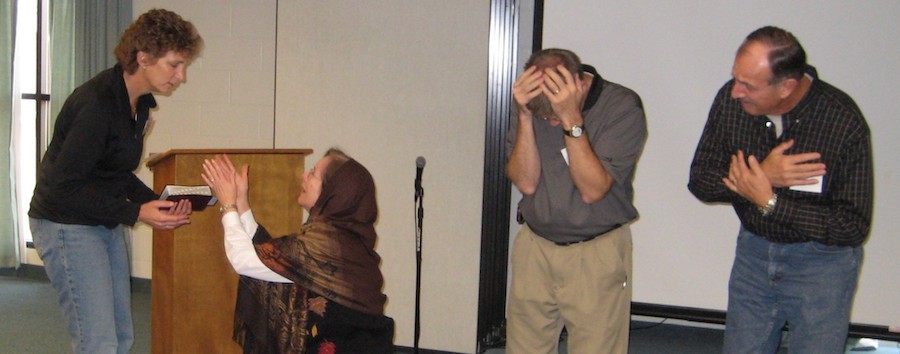
 we teach the storytellers how to tell their Bible stories using actions, expressions and voice inflections so that the story can be seen and heard.
we teach the storytellers how to tell their Bible stories using actions, expressions and voice inflections so that the story can be seen and heard. 
 of people, crowds, or places mentioned in the told story.
of people, crowds, or places mentioned in the told story. 